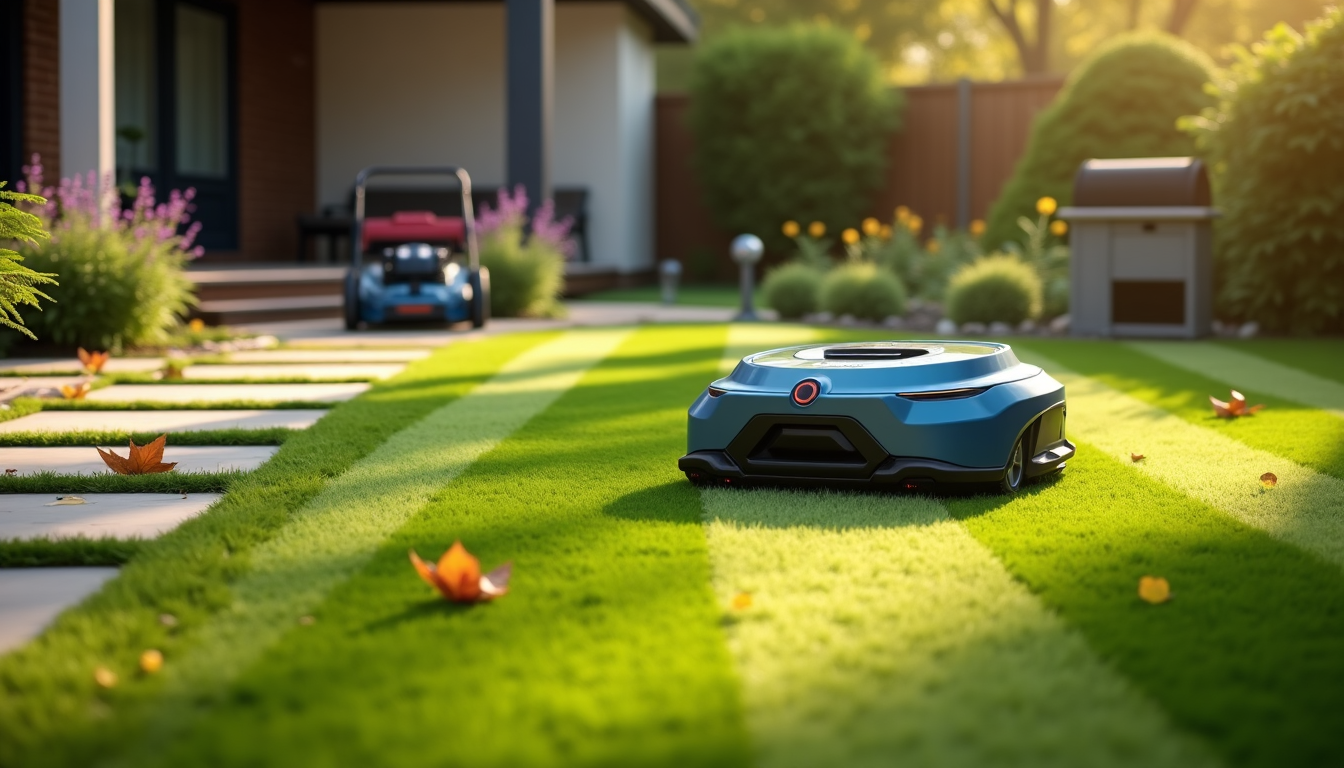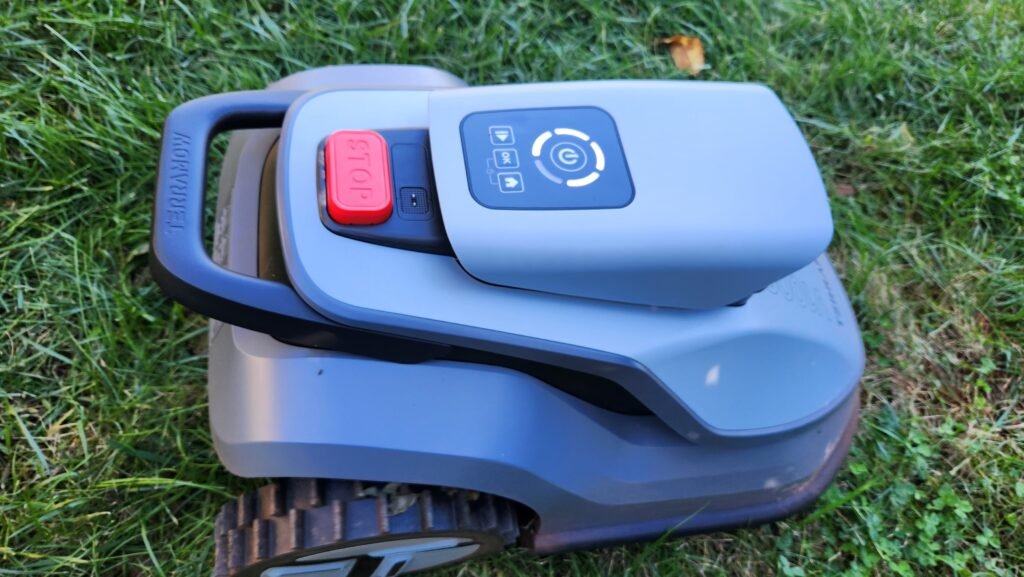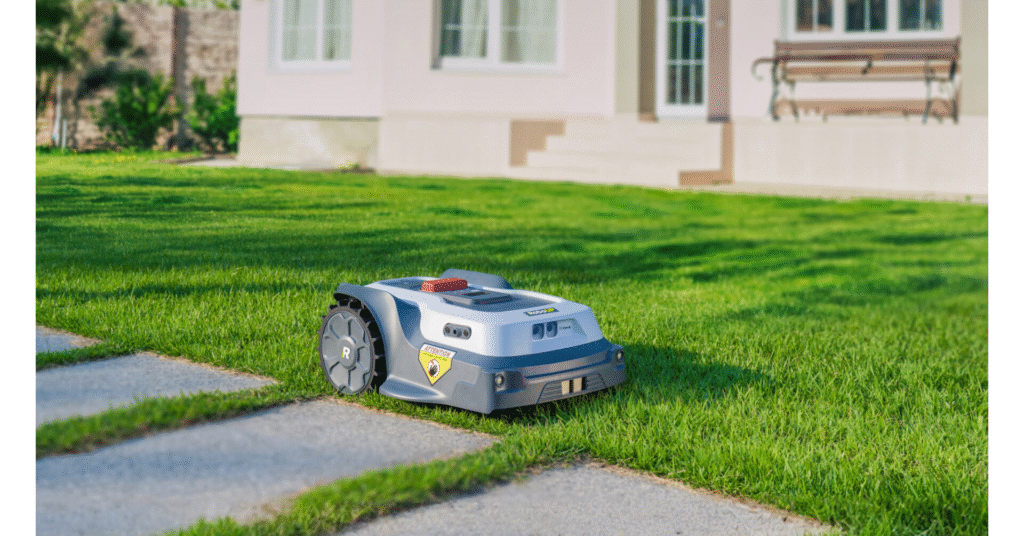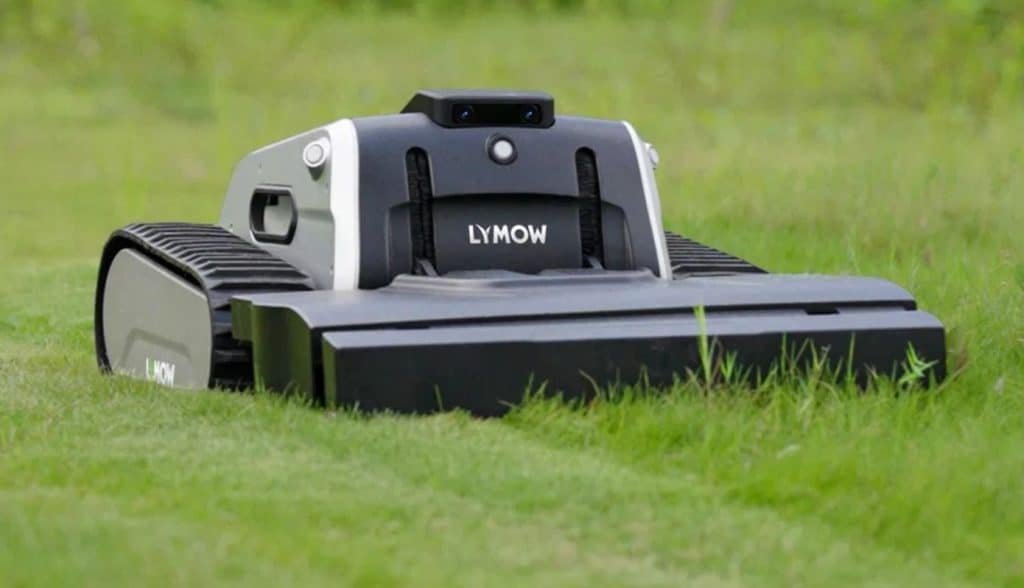I used to spend countless hours pushing my lawn with do robot mower pay for themselves around my yard every weekend, wondering if there was a better way to maintain my lawn. That’s when I started researching robot mowers, and the big question came up: Are robot mowers worth it?
After extensive research and testing, I discovered that robot mowers are more than just fancy gadgets. While many homeowners wonder if robot lawn mowers are worth it, especially given their price tags ranging from $800 to $3,000, the answer depends on several factors. We’ll examine everything from initial costs to long-term benefits, helping you decide if a robot mower is a smart investment for your property.
In this comprehensive guide, we’ll break down the real costs, time savings, environmental benefits, and smart features of robot mowers. We’ll also compare them with traditional mowing methods to help you make an informed decision.
Understanding Robot Mower Investment Costs
When considering whether robot mowers pay for themselves are worth it, let’s first look at the investment required. As someone who’s researched extensively, I’ll break down all the costs you need to consider.
Initial purchase price ranges
The price of a robot mower varies significantly based on your lawn size and desired features. For small yards under 0.25 acres, you can find reliable models between $400-$800. For medium-sized lawns (0.5 acres), expect to pay $800-$1,500, while large lawns over 1 acre require premium models ranging from $2,000-$5,000.
What affects these prices? Here are the key factors:
- Lawn size and complexity
- Battery quality and runtime
- Smart features and navigation systems
- Brand reputation
Installation and setup expenses
I’ve found that installation costs can significantly impact your initial investment. Professional installers typically charge either a flat fee or by the hour plus materials. The complexity of your lawn plays a crucial role – properties with multiple zones or complicated features require additional wiring and setup time.
Long-term maintenance costs
We need to consider several ongoing expenses to determine if robot mowers are worth it. The annual maintenance typically includes:
The battery needs replacement every 4-6 years, costing around $80 for an original battery. Blade replacement varies by model – some need changes every 4-6 weeks, while others last an entire season, with blade sets costing about $15 per season.
Electricity costs are surprisingly modest. Running a robot mower from March to November typically costs just $14-$18 annually for small to medium lawns. Even for larger areas up to 4,000 m², the annual electricity cost stays around $40.
Some manufacturers require professional servicing every 6-24 months to maintain warranty coverage. I recommend checking these requirements before purchase, as service costs and travel to dealers can add up significantly over time.
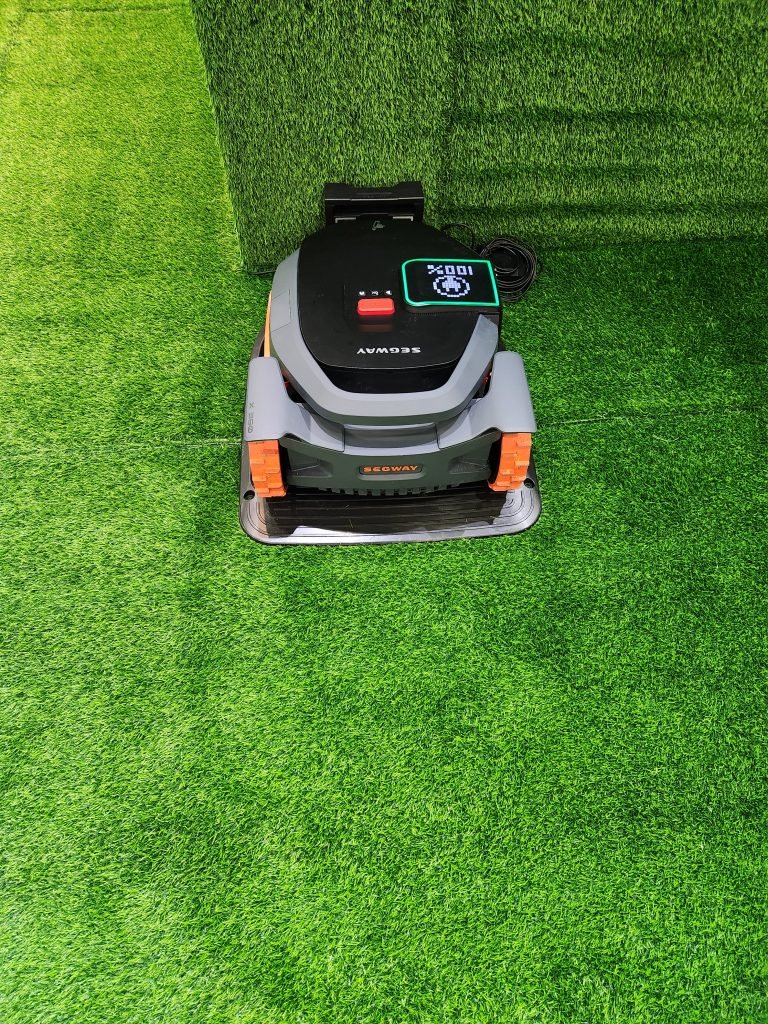
Time and Labor Savings Analysis
Looking at my research on time savings, I’ve discovered some fascinating data about how robot mowers can change our lawn care routine. Let me share what I’ve learned about the real value of your time and effort.
Annual hours saved vs traditional mowing
The time savings from robot mowers are substantial. For a typical half-acre lawn, traditional mowing consumes about 60 hours annually. I was surprised to learn that the average person spends roughly 3.5 years of their life on lawn care – that’s an astounding 29,952 hours!
Here’s what my research shows for annual time savings:
- Small lawns (1/4 acre): 26 hours saved annually
- Medium lawns (1/2 acre): 60 hours saved annually
- Large lawns (1 acre): 120 hours saved annually
Converting time savings to monetary value
When we convert these hours into dollars, the value becomes clear. Using an average salary of $50,000, the time spent on lawn maintenance over a lifetime equals approximately $175,000. For a half-acre lawn, the time saved equates to about $1,080 annually in labor value.
Physical effort reduction benefits
The physical benefits of switching to a robot mower have been significant. These machines handle the heavy lifting while offering several advantages:
- Consistent Maintenance: They work autonomously, maintaining your lawn without physical strain
- Accessibility: Perfect for those with mobility issues or physical limitations
- Reduced Physical Strain: No more pushing heavy equipment or dealing with challenging terrain
What I find particularly valuable is that robot mowers can be scheduled to work at specific times, even when we’re not home. This flexibility means we can focus on more important activities or simply enjoy our free time. A study from the Tokyo University of Agriculture and Technology confirmed that these mowers significantly reduce human workload through their autonomous operation.
For commercial applications, the efficiency is even more dramatic. Jobs that once required six crew members can now be completed with just one operator and a robotic mower. This kind of efficiency isn’t just about saving time – it’s about transforming how we approach lawn maintenance entirely.
Environmental and Property Benefits
After exploring the time and cost benefits, I’ve discovered that robot mowers offer remarkable environmental advantages that make them even more appealing. Let me share what I’ve learned about their impact on both our environment and property value.
Reduced carbon emissions impact
The environmental impact of traditional lawn care shocked me. Traditional gas mowers consume a staggering 1.2 billion gallons of gasoline annually, and lawn equipment contributes to 12% of all carbon monoxide emissions. When I compared this to robot mowers, the difference was striking. A traditional gas-powered mower running for just one hour produces emissions equivalent to driving a car for 500 miles.
Here’s what makes robot mowers environmentally superior:
- Zero direct emissions during operation
- Extremely low energy consumption
- Reduced need for chemical treatments
- Significantly lower noise levels (60-70 decibels, compared to 100+ for traditional mowers)
Improved lawn health outcomes
I’ve noticed significant improvements in lawn quality with robot mowers. Studies in Europe have confirmed what I’ve observed – robot-mown grass becomes denser with fewer weeds. The science behind this is fascinating:
The frequent mowing pattern creates finer clippings that naturally decompose and fertilize the soil. These tiny clippings add nutrients back to the soil, reducing the need for additional fertilizers. What’s more, the lightweight design of robot mowers prevents soil compaction, allowing for better water absorption and reducing storm water runoff.
The mowers’ ability to work at night is particularly beneficial, as cutting grass during cooler hours puts less stress on the turf. This consistent maintenance creates a healthier lawn that needs less water and fewer chemical treatments.
Property value enhancement
From my research, I’ve found that robot mowers contribute to property value in several ways. The landscaping industry’s growing adoption of these mowers reflects their positive impact on property maintenance. The consistent cutting height and even distribution of clippings create a manicured look that enhances curb appeal.
The reduced noise pollution (16 times quieter than traditional mowers) makes these mowers particularly attractive in residential areas. This feature, combined with their environmental benefits, aligns perfectly with the increasing focus on sustainable living and smart home technology that modern homebuyers value.
Smart Features and Technology Value
The smart technology packed into modern robot mowers has truly impressed me during my research. These aren’t just simple automated machines; they’re sophisticated lawn care assistants that make maintaining a perfect lawn easier than ever.
GPS navigation advantages
I’ve found that GPS navigation is a game-changer for lawn maintenance. The system helps robot mowers cut every corner of your garden evenly, finding the most efficient path while using minimal energy. What fascinates me is how GPS-assisted navigation optimizes cutting patterns, especially in larger or more complex areas.
For added security, GPS tracking provides real-time location updates if your mower ventures outside its designated area. I particularly appreciate how the system creates a virtual map of your lawn, ensuring complete coverage without missing spots.
Mobile app control benefits
The convenience of controlling your robot mower from anywhere has revolutionized lawn care. Through dedicated apps, I can:
- Monitor real-time mower status and location
- Adjust cutting schedules and heights remotely
- Receive instant notifications about mower activity
- Create customizable work zones with different settings
What I find particularly useful is the ability to make spontaneous schedule changes. For instance, if unexpected rain appears, I can quickly send the mower back to its dock using my smartphone.
Safety and security features
Safety features have impressed me the most about robot mowers. Modern models incorporate multiple layers of protection:
- Lightweight pivoting blades (3g) that immediately stop upon contact with objects
- Advanced obstacle detection using ultrasonic sensors
- Wildlife consideration features that avoid operation during peak animal activity times
The Oxford University study on robotic mowers highlighted significant safety improvements, particularly noting how features like pivoting blades and skid plates increase safety indices. For cybersecurity, manufacturers have implemented robust protection measures since these devices connect to home networks.
I’ve noticed that these smart features work together seamlessly. For instance, if the mower encounters an obstacle, it will automatically adjust its path, while the app simultaneously sends me a notification about the event. This combination of intelligence and safety features makes robot mowers particularly worth considering for families with children or pets.
Comparing Total Cost of Ownership
Let’s crunch the numbers to see if robot mowers are truly worth the investment. Having analyzed various cost factors, I’ll share my findings about the long-term financial impact of choosing a robot mower.
Robot mower vs traditional mowing expenses
When I compared the costs, I found that entry-level robot mowers start at $600-$1,000, while high-end models range from $2,000-$3,500. Traditional push mowers, in contrast, typically cost $200-$600, with riding mowers ranging from $2,000-$5,000.
The annual operating costs tell an interesting story:
- Robot mower: $20 in electricity + $100 maintenance
- Traditional mower: $36 per mow (including gas and time value)
For maintenance, I’ve discovered that robot mowers need:
- Battery replacement every 2-3 years ($100-$300)
- Blade changes every 6-8 weeks ($20-$50 per set)
Professional service cost comparison
I was surprised to learn that professional lawn services average about $600 annually in the US. When comparing this to robot mowers, the math becomes interesting. While a robot mower’s initial cost is higher, the annual operating cost is significantly lower than professional services.
For a half-acre lawn, here’s what I found:
| Service Type | Annual Cost |
|---|---|
| Robot Mower | $41 (electricity) |
| Professional Service | $600+ |
| Self-Mowing | $108 (time + gas) |
Return on investment timeline
Based on my analysis, the ROI timeline varies depending on your current lawn care method. If you’re currently paying for professional services, a robot mower could pay for itself in about 2-3 years. For those maintaining their own lawn, the ROI calculation needs to factor in the value of your time.
For a half-acre lawn mowed 30 times annually, I calculated:
- 60 hours of personal time saved per year
- $108 in gas and time costs saved annually
- Additional savings from reduced fertilizer needs due to grass clipping recycling
What makes robot mowers particularly worth considering is their ability to maintain consistent lawn care while eliminating ongoing labor costs. The initial investment might seem steep, but when I factor in the time savings and reduced maintenance expenses, the long-term value becomes clear. For larger properties, the savings are even more substantial, with potential time savings of up to 120 hours annually for one-acre lawns.
Conclusion
Robot mowers represent a significant shift from traditional lawn care methods. My research shows they offer compelling value through substantial time savings – up to 120 hours annually for larger lawns – and reduced physical strain. While the initial investment of $800-$3,000 might seem steep, the combination of lower operating costs, environmental benefits, and smart features makes them worth considering.
The numbers tell a clear story. Robot mowers can pay for themselves within 2-3 years compared to professional services, while delivering consistent results and healthier lawns. Their minimal energy consumption, zero direct emissions, and quiet operation add environmental value that traditional mowers simply can’t match.
Smart features like GPS navigation and mobile control transform lawn maintenance from a weekly chore into an automated task. These technological advantages, combined with the time and cost savings, make robot mowers a practical investment for homeowners seeking efficient, sustainable lawn care solutions.

